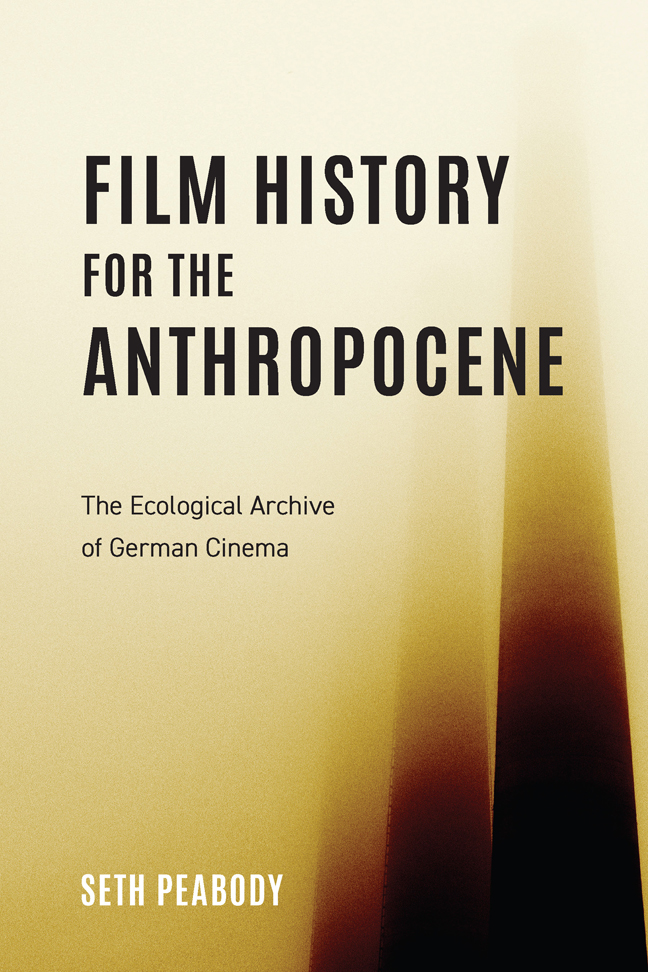3 - Infrastructure in the Anthropo(s)cene: Fritz Lang's Metropolis as Ecological Archive
Published online by Cambridge University Press: 21 February 2024
Summary
In the beginning, there was the oil rig. Then came the asphalt streets that sprawl miles and miles through dismal wastelands, always flanked by oil rigs growing wild. Then, for beautification of the surroundings, the palm trees are brought in.
The First Chapters Of This Book focused on the status of Heimat discourse as a key locus for the ecological archive of German cinema. Heimat films and related discourse can reveal both the ways in which environments were debated, curated, and deliberately constructed on screen (for example, in the multispecies assemblages of Die Geierwally discussed in chapter 1, or the transformation from rural to industrial landscapes in industrial Heimat films discussed in chapter 2) and how the nonhuman elements of these films carry out both physical actions and signifying potential beyond what the filmmakers can control. This can be seen both in the mutual violence between humans and vultures involved in filming Die Geierwally, despite the purported peaceful interspecies relations in the film, and in the connotation of industrial disaster that Sprengbagger 1010 implies due to the major disasters connected to the companies and industrial landscapes celebrated in the film. The first chapters traced ways in which the words and images of Heimat discourses connect to physical changes in the environment in ways that are often more complex and contradictory than what the creators of the initial discourse might have intended. Now, in part two, the book's focus shifts from the seemingly immaterial discourse of Heimat (which is, of course, connected to material change in complex ways), to the seemingly physical status of infrastructures in and around German environmental films, paying particular attention to films of the Weimar era, a focus justified by the intense expansion of infrastructures in Germany's cities and rural areas in the final decades of the nineteenth and first decades of the twentieth centuries. Just as environmental discourses, especially ideas of Heimat, within German films serve as both response to and instigator of physical changes in the nonfilmic world, the portrayal and creation of physical infrastructures on screen sheds new light on environmental thought and discourse. Both parts of this book explore the complex relationships between film as a creative medium and the physical changes to the nonhuman environment.
- Type
- Chapter
- Information
- Film History for the AnthropoceneThe Ecological Archive of German Cinema, pp. 94 - 115Publisher: Boydell & BrewerPrint publication year: 2023



